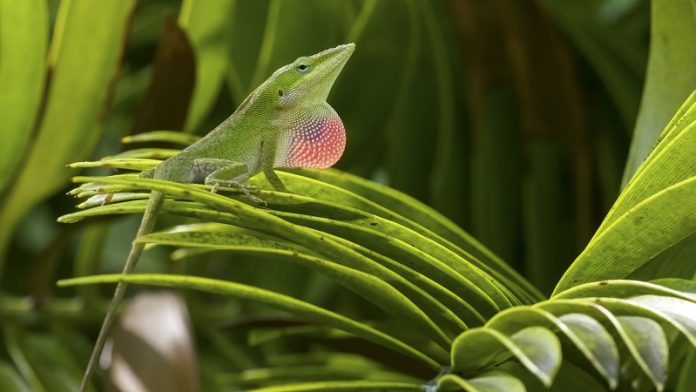
Once upon a time, in a lush green garden in Florida, a group of scientists embarked on a remarkable journey to understand why creatures from the distant past often look a lot like the animals we see today.
Charles Darwin, a famous scientist from the 1800s, told us that evolution—nature’s tool for change—is always ticking, subtly shaping and molding species to help them survive better.
But if change is constant, then why do creatures seem to stay the same for so, so long?
This puzzling question is what James Stroud, a curious scientist from the Georgia Institute of Technology, wanted to find the answer to.
It’s a big mystery in the world of evolutionary biology and it’s known as the paradox of stasis.
It’s like having a puzzle where the pieces are constantly changing shape, yet when you look at the picture on the box, it remains the same.
In a tropical paradise called the Fairchild Tropical Botanic Gardens, James and his team decided to play detective with four species of Anolis lizards (or “anoles” for short) to crack this evolutionary puzzle.
Their investigation wasn’t short.
Over three years, through sun and rain, day and night, they used little lassos to gently catch every lizard living on a small island in the garden.
Why the lizards, you might wonder? Because they could observe them closely, see what physical traits helped them survive, and monitor them over several generations.
So, they weighed them, measured their legs, heads, and even checked how sticky their toes were!
After making sure each lizard was tagged so they could tell who was who, they released them back to their homes in the trees and watched what happened over time.
By documenting which lizards survived and which didn’t, which had babies and which didn’t, they were able to piece together a snapshot of evolution in action.
Were the lizards changing? Were their physical characteristics—like the length of their legs or the size of their heads—shifting to help them survive better?
To James’s astonishment, nature didn’t favor just one ‘look’ or another for the lizards. Some years, the long-legged lizards were the stars, darting around and surviving well.
Other times, it was the shorter-legged lizards that were flourishing. The spotlight of survival was shifting, not sticking to one single trait.
But here’s where the magic happened: when they zoomed out and looked at the bigger picture, all these little changes cancelled each other out over the long term. It was like watching a seesaw move up and down but never favoring one side. The lizards, despite all the little evolutionary tweaks happening year after year, stayed essentially the same!
James thought this was a clue to solving our ancient mystery. Even though evolution is constantly at work, tinkering and testing new designs, the overall look of a species may not change much because all those changes balance each other out over time.
This explains why, when scientists dig up old fossils, creatures from millions of years ago sometimes look astonishingly like the ones scampering around today.
For James and his team, this was a huge revelation! It provided a sneak peek into the hidden, seemingly still, yet dynamically balanced world of evolution.
It was a reminder that even though we might not see drastic changes in the animals around us, the wheels of evolution are always turning, silently shaping life in a delicate, balanced dance through time.
James believes that understanding this dance is not only key to understanding the story of life on our planet but also crucial for comprehending how life might continue to twirl gracefully, even in a world heavily influenced by humans.
In the lush, dense foliage of the Florida garden, the lizards continue their daily hustle, unaware that they’ve provided a key to unlocking one of nature’s most intriguing mysteries.
And for scientists like James, the journey to explore and understand the vibrant tapestry of life, woven by the subtle and consistent threads of evolution, continues.
The paradox of stasis might not be a paradox after all, but a beautifully balanced equation of life, where change is constant yet subtly balanced to preserve the essence of each creature across the sands of time.
And just like that, the secret lives of lizards have illuminated a path toward understanding the eternal, quietly dynamic equilibrium of life on Earth.
Follow us on Twitter for more articles about this topic.



